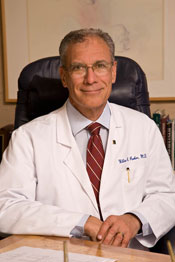I am a 47 year old woman who has never had children. I have recently been told I needed a hysterectomy after being seen by a oncolgist/gyn. I have a 2.5- 3 cm cyst on each ovary- neither are considered simple- one has some solid material and both are septated.
The MD seems to think they are benign. I have had 4 u/s’s since last July and the cysts have remained basically the same. On the last one 1 week ago, it was noted that my uterine lining was also thickened- no fibroids that I know of. I have not had a period since last September and blood work has shown me to be menopausal. I am not taking any hormones, but am taking Remifemin for hot flashes. My Past medical history includes taking infertility drugs (Clomid) X 3 cycles, with no pregnancies. My mother died of breast cancer at age 46- no other relatives with breast or gyn cancers.
If I have the surgery, it will have to be soon due to work issues. Can you please give me any advice as to other options? Thanks so much!
M
M,
Most ovarian cysts are benign and it would be highly unusual for ovarian cancer to remain unchanged on ultrasound over 7 months. Uterine lining thickening is also usually benign and can be easily evaluated in the office with an endometrial biopsy.
I cannot give medical advice over the internet, but I think you should consider getting a second opinion from someone knowledgeable about ovarian cysts.
Bill Parker, MD



